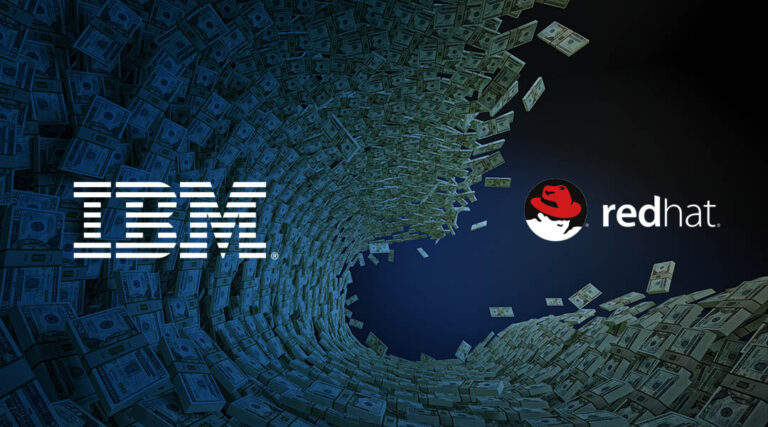
IBM closed its acquisition of Red Hat today, and immediately declared that bar $34bn changing hands, nothing much has changed and the organisations will largely stay as they are – except for the inevitable changes.
The last major hurdle to the deal fell two weeks ago, when the European Union gave the deal its blessing.
The two companies unleashed a blizzard of press releases, blog posts and other “assets” today, to recap the benefits of the deal and what will, and won’t change.
In an open email calling Red Hatters to an all-hands meeting to discuss the new regime, CEO Jim Whitehurst wrote: “You’ve heard me say this before, but it bears repeating, Red Hat is still Red Hat. IBM is committed to preserving Red Hat’s independence, neutrality, culture and industry partnerships.”
At the same time, he continued, “With IBM’s expertise and resources, we will be able to scale and accelerate our efforts and bring Red Hat to an even wider audience. This will benefit Red Hat, IBM, our customers, partners and the open source community as a whole.”
One plus, he wrote, would be IBM’s global reach – its operates in 175 countries, compared to Red Hat’s 40. As for Whitehurst himself, he joins IBM’s senior management team, and will report directly to CEO Ginny Rometty.
A canned Q/A between Paul Cormier, Red Hat president for products and technologies, and Arvind Krishna, svp, IBM Cloud & Cognitive, gave a few very broad hints on what might happening on a product level.
“There will be an increase in terms of the investment that goes into open source,” said Krishna, and “Another considerable benefit is the massive optimization of IBM products to run on Red Hat products—including Red Hat Enterprise Linux and OpenShift.”
Red Hat would be supplying the platforms on containers and Linux, said Krishna, while “For IBM, the name of the game is to ensure that the middleware, data, and AI—not just IBM’s but also the open source ones—come optimized.” This will be all the easier given that IBM has offloaded a slew of other software businesses in recent years.
Krishna added, “Moving forward, the primary platform on which we’ll develop and deploy software products will be Linux and OpenShift. Both for cloud and on-premise.”
Meanwhile, Red Hat’s Brad Micklea said in a developer blog, that the deal changed nothing for Red Hat’s Developer Program and Developer Tools group. “The Red Hat Developer program—including the site, blog, and our social media channels—will remain independent.”
While he pointed readers at IBM’s offering, he reiterated, “you’ll have to sign up separately, since we won’t be merging the two different programs.”
All of which should reassure Red Hatters themselves, as well as their customers, but will make any signs of creeping Blue all the alarming for them in the future.
